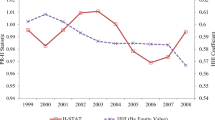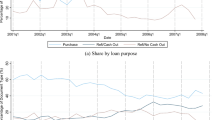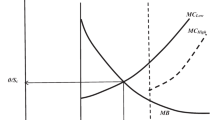Abstract
This paper develops an equilibrium model of the commercial mortgage market that includes the sequence from commitment to origination and allows testing for differences by type of lender. From borrowers, loan demand is based on the income yield, capital gains, and expectations about return distributions. Lenders use prices such as mortgage rates and their distributions, and quantities in underwriting standards. There are separate equilibria in the markets for loan commitments and originations. Bank and nonbank lenders are not restricted to the same lending technology, nor to the weights placed on mortgage rates as opposed to underwriting standards. Empirical results for the United States commercial mortgage market indicate that banks use interest rates in allocating credit while nonbanks rely on underwriting standards, notably the loan-to-value ratio. A consequence is that nonbanks have a clientele incentive towards making low cap rate loans compensated by low loan-to-value ratios.
Similar content being viewed by others
References
Allen, M. T., R. Rutherford, and M. K. Wiley. (1999). “The Relationship Between Mortgage Rates and Capital-Market Rates Under Alternative Market Conditions,” Journal of Real Estate Finance and Economics 19, 211-221.
Billett, M. T., M. J. Flannery, and Jon A. Garfinkel. (1995). “The Effect of Lender Identity on a Borrowing Firm's Equity Return,” Journal of Finance 50, 699-718.
Chaudhry, M. K., F. C. Neil Myer, and James K. Webb. (1999). “Stationarity and Cointegration in Systems with Real Estate and Financial Assets,” Journal of Real Estate Finance and Economics 18, 339-349.
Dutta, S., M. Iskandar-Datta, and Ajay Patel. (1999). “Bank Monitoring and the Pricing of Corporate Public Debt,” Journal of Financial Economics 51, 435-449.
Fama, E. F. (1985). “What's Different about Banks?” Journal of Monetary Economics 15, 29-39.
Flannery, M., and J. Houston. (1999). “The Value of a Government Monitor for U.S. Banking Firms,” Journal of Money, Credit and Banking 31, 14-34.
Hansen, L. P., and R. J. Hodrick. (1980). “Forward Exchange Rates as Optimal Predictors of Future Spot Rates: An Econometric Analysis,” Journal of Political Economy 88, 829-853.
James, C. (1987). “Some Evidence on the Uniqueness of Bank Loans,” Journal of Financial Economics 19, 217-236.
Jorion, P. (1995). “Predicting Volatility in the Foreign Exchange Market,” Journal of Finance 50, 507-528.
Leland, H. E., and K. B. Toft. (1996). “Optimal Capital Structure, Endogenous Bankruptcy, and the Term Structure of Credit Spreads,” Journal of Finance 51, 987-1019.
Longstaff, F. A., and E. Schwartz. (1995). “A Simple Approach to Valuing Risky Fixed and Floating Rate Debt,” Journal of Finance 50, 789-820.
Slovin, M. B., S. A. Johnson, and J. L. Glascock. (1992). “Firm Size and the Information Content of Bank Loan Announcements,” Journal of Banking and Finance 16, 1057-1071.
Author information
Authors and Affiliations
Rights and permissions
About this article
Cite this article
Ambrose, B.W., Benjamin, J.D. & Chinloy, P. Bank and Nonbank Lenders and the Commercial Mortgage Market. The Journal of Real Estate Finance and Economics 26, 81–94 (2003). https://doi.org/10.1023/A:1021574215894
Issue Date:
DOI: https://doi.org/10.1023/A:1021574215894




